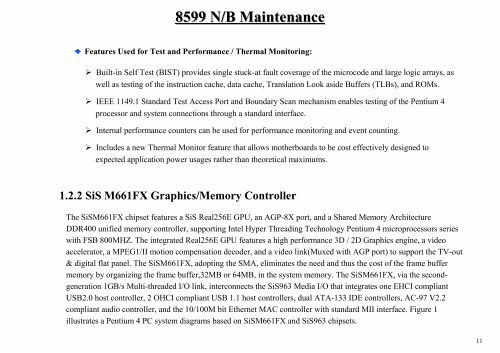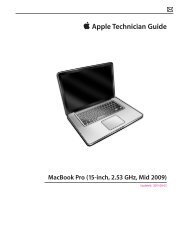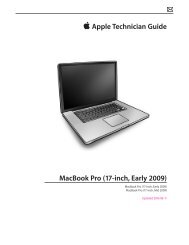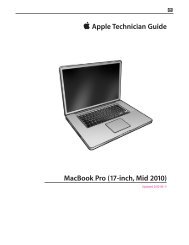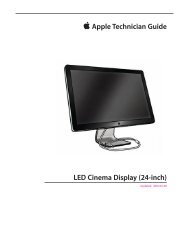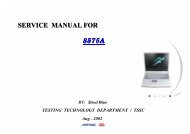mitac 8599.pdf - tim.id.au
mitac 8599.pdf - tim.id.au
mitac 8599.pdf - tim.id.au
You also want an ePaper? Increase the reach of your titles
YUMPU automatically turns print PDFs into web optimized ePapers that Google loves.
8599 N/B Maintenance<br />
Features Used for Test and Performance / Thermal Monitoring:<br />
Built-in Self Test (BIST) prov<strong>id</strong>es single stuck-at f<strong>au</strong>lt coverage of the microcode and large logic arrays, as<br />
well as testing of the instruction cache, data cache, Translation Look as<strong>id</strong>e Buffers (TLBs), and ROMs.<br />
IEEE 1149.1 Standard Test Access Port and Boundary Scan mechanism enables testing of the Pentium 4<br />
processor and system connections through a standard interface.<br />
Internal performance counters can be used for performance monitoring and event counting.<br />
Includes a new Thermal Monitor feature that allows motherboards to be cost effectively designed to<br />
expected application power usages rather than theoretical maximums.<br />
1.2.2 SiS M661FX Graphics/Memory Controller<br />
The SiSM661FX chipset features a SiS Real256E GPU, an AGP-8X port, and a Shared Memory Architecture<br />
DDR400 unified memory controller, supporting Intel Hyper Threading Technology Pentium 4 microprocessors series<br />
with FSB 800MHZ. The integrated Real256E GPU features a high performance 3D / 2D Graphics engine, a v<strong>id</strong>eo<br />
accelerator, a MPEG1/II motion compensation decoder, and a v<strong>id</strong>eo link(Muxed with AGP port) to support the TV-out<br />
& digital flat panel. The SiSM661FX, adopting the SMA, eliminates the need and thus the cost of the frame buffer<br />
memory by organizing the frame buffer,32MB or 64MB, in the system memory. The SiSM661FX, via the secondgeneration<br />
1GB/s Multi-threaded I/O link, interconnects the SiS963 Media I/O that integrates one EHCI compliant<br />
USB2.0 host controller, 2 OHCI compliant USB 1.1 host controllers, dual ATA-133 IDE controllers, AC-97 V2.2<br />
compliant <strong>au</strong>dio controller, and the 10/100M bit Ethernet MAC controller with standard MII interface. Figure 1<br />
illustrates a Pentium 4 PC system diagrams based on SiSM661FX and SiS963 chipsets.<br />
11


